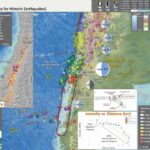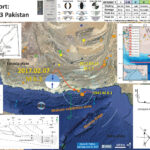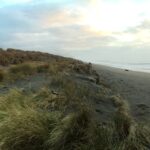Earthquake of the Day: 2010.02.27 M 8.8 Maule, Chile. There was an earthquake with a magnitude of M 8.8 on this day in 2010. I have prepared an interpretive poster that shows the extent of ground shaking modeled for this…
Earthquake Report: Makran subduction zone (Pakistan)!
There was a good sized earthquake along the Makran subduction zone. This subduction zone is a convergent plate boundary where the Arabia plate subducts (goes beneath) northwards under the Eurasia plate. There has been one aftershock reported by the USGS.…
Radio Show Material: KHUM with Lyndsey Battle
Radio Show KHUM with Lyndsey Battle I prepared this material to prepare for a radio show that I participated in with Lyndsey Battle on KHUM. Here is the page on the KHUM website for this radio show. Here is a…



